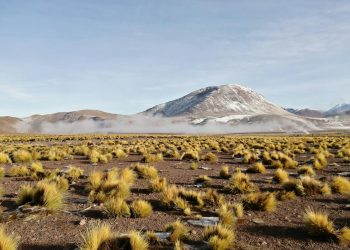Photography is the art of capturing light. It is about freezing a moment in time and encapsulating the beauty of what the human eye perceives, often through the careful manipulation of light. Natural light, in particular, has a special allure. It is a dynamic, ever-changing element that can dramatically transform the mood, texture, and feel of an image. From the soft, golden glow of early morning to the harsh midday sun or the ethereal quality of twilight, natural light is an essential tool for photographers. Mastering the use of natural light is not about controlling it, but rather understanding its nuances and embracing its unpredictability.
Understanding Natural Light: A Photographer’s Palette
Natural light refers to the light that comes from natural sources such as the sun, moon, and fire. The most common form of natural light that photographers work with is sunlight. Unlike artificial lighting, which can be controlled and shaped, natural light is constantly shifting, whether due to time of day, weather conditions, or environmental factors. This gives it an organic, unpredictable quality that can both challenge and inspire photographers.
The key to mastering natural light is learning to observe how it behaves at different times of day and how it interacts with the subject. Photographers often speak about the “quality” of light. This refers to the intensity, direction, and color temperature of the light, all of which play crucial roles in the final image. For example, harsh sunlight at noon creates high contrast and sharp shadows, whereas the soft, diffused light at dawn or dusk creates a warm, flattering glow.
The Golden Hour: Harnessing the Magic of Soft, Warm Light
One of the most coveted times of day for photographers is the golden hour, which occurs just after sunrise and just before sunset. During these times, the sun is low in the sky, casting a soft, warm light that wraps around the subject in a way that’s difficult to replicate at other times of day. The golden hour is known for its flattering effect on skin tones, as well as its ability to add depth, texture, and drama to the landscape.
This type of lighting is ideal for portraits, as the soft light reduces harsh shadows and creates a natural, beautiful glow around the subject. Landscape photographers also make use of this time to capture breathtaking images, as the low-angle sunlight emphasizes the textures and features of the terrain, creating long shadows that add visual interest and drama to the scene.
To capture the full potential of the golden hour, photographers must plan ahead and know the timing of sunrise and sunset. Apps and tools are available to help estimate the exact times for specific locations, ensuring that the photographer is in the right place at the right time.
The Blue Hour: The Twilight’s Mysterious Charm
Another special moment for photographers is the blue hour, which occurs just before sunrise and after sunset. During this time, the sun is below the horizon, and the sky takes on a deep, rich blue hue. The light during the blue hour is cooler than the golden hour, and it offers a unique, otherworldly quality that is ideal for creating atmospheric and moody images.
The blue hour is particularly effective in urban photography, where city lights begin to glow against the deepening blue sky, creating striking contrasts. For landscape photographers, it’s a time to capture serene and tranquil moments when the world seems suspended between day and night. The colors during this time are subtle but incredibly rich, giving the photographer an opportunity to explore a different palette than what is available during the day.
Overcast Days: Embracing Soft, Diffused Light
While sunny days can provide dramatic and high-contrast lighting, overcast days offer a different set of advantages for photographers. When the sky is covered with clouds, the light becomes diffused, meaning it is spread evenly across the scene, with no harsh shadows or bright highlights. This creates an even, soft light that is ideal for capturing fine details and textures without worrying about the intense contrasts of bright sunlight.
Overcast lighting is often preferred for portrait photography, especially for individuals with sensitive skin or where soft, even lighting is desired. In nature photography, an overcast sky allows for more controlled and predictable light, making it easier to focus on capturing intricate details like the textures of leaves or the delicate petals of flowers. Additionally, overcast light tends to emphasize color, making it ideal for vibrant or colorful subjects.
Direct Sunlight: Working with High Contrast
Photographers often shy away from the harsh light of midday sun, as it creates strong shadows and high contrast. However, with the right techniques, direct sunlight can be used to create dramatic, striking images. The key to working with midday sun is to understand how it impacts the subject and how to balance the light and shadows to your advantage.
One technique for working with harsh sunlight is to use it to create strong, defined shadows. Photographers can position their subjects in such a way that the shadows play a critical role in the composition of the image. Another technique is to use reflectors or diffusers to soften the light, bouncing the sunlight in a more controlled manner or filtering it through a translucent material to reduce its intensity.
Direct sunlight is also effective for creating silhouette images, where the subject is positioned against a bright light source, creating a stark contrast between the darkened subject and the illuminated background. These types of images rely on strong composition and shape rather than detail, and they can evoke a sense of mystery and drama.
Direction of Light: The Power of Shadows and Highlights
The direction of natural light plays a crucial role in shaping the mood and character of an image. The way light interacts with the subject can emphasize certain features, create textures, and add depth to the photograph. By experimenting with the direction of light, photographers can bring out the best in their subjects.
Frontlighting occurs when the light source is positioned behind the photographer, illuminating the subject directly. This type of lighting creates a flat, even exposure and is often used in portrait photography, as it produces soft shadows and reduces facial wrinkles.
Side lighting, where the light comes from the side of the subject, creates contrast and depth by casting long shadows. This technique is useful for adding texture and dimension to a scene, whether it’s the folds in fabric, the contours of a face, or the texture of a landscape.
Backlighting occurs when the light source is behind the subject, creating a halo effect or silhouette. This technique works well for emphasizing outlines and shapes and can create an ethereal, dreamlike quality in the image.
The Role of White Balance: Achieving Accurate Color Temperature
One of the challenges of shooting with natural light is managing the color temperature of the light. Different light sources have different color temperatures, and the time of day can dramatically change the way light appears. Early morning and late afternoon light tends to have a warm, golden hue, while midday sunlight is more neutral or cool in tone. The color of light can affect the mood of the image, so adjusting the white balance on the camera is important for achieving accurate colors.
Many cameras allow photographers to adjust the white balance manually, or they can use presets like “daylight,” “cloudy,” or “shade” to match the lighting conditions. In post-processing, photographers can further tweak the color balance to achieve the desired warmth or coolness in the image.
Embracing the Unpredictability of Natural Light
While learning the techniques for working with natural light is essential, it is equally important for photographers to embrace its unpredictability. Unlike artificial light, which can be controlled and manipulated, natural light is always changing. Weather conditions, time of day, and location all affect how light behaves. This uncertainty can be frustrating, but it also provides opportunities for creative expression.
A cloudy day might turn into a beautiful soft light moment; a sudden storm could produce dramatic, stormy skies perfect for capturing mood and atmosphere. As a photographer, it’s important to be flexible and adaptable, willing to take advantage of the lighting conditions you are presented with. Rather than forcing a particular lighting setup, you can learn to work with the natural light available, using it to create unique and compelling images.











